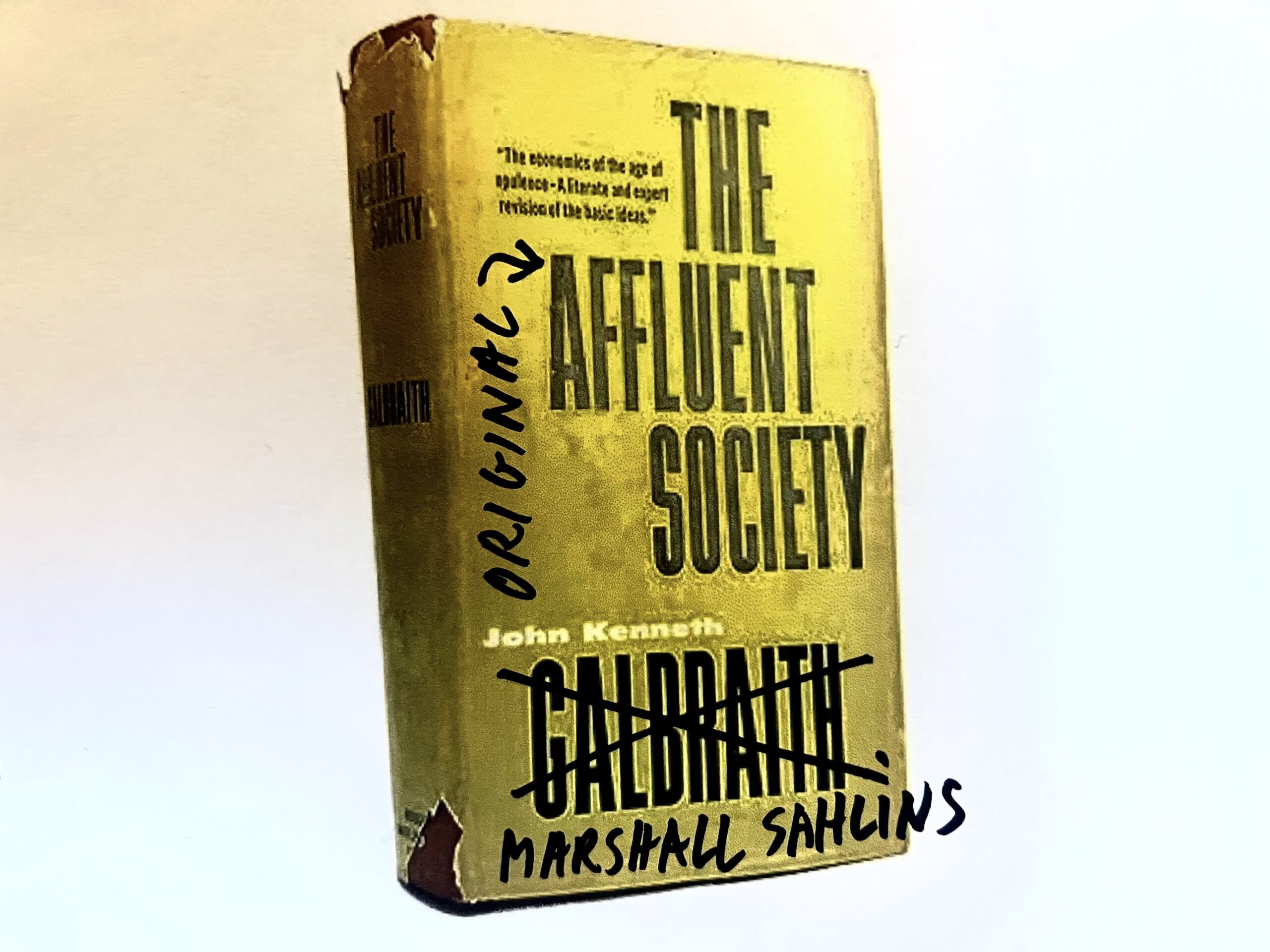Zen Road to Affluence
February 26, 2024
In 1966, Marshall Sahlins wrote an important and still quite sensational paper entitled “The Original Affluent Society”. In it he argues that the original hunter-gatherers did not exist, as was commonly believed, on the edge of famine but had a sufficient degree of material comfort and security to be considered affluent. Sahlins defines affluence as being able to satisfy wants, and there are two ways to achieve it. One way is by producing many goods, as we do in contemporary consumer society. Another way is by desiring little and meeting wants with what is available to them. The latter is often the case in hunter gatherer societies. Sahlins calls this the “Zen road to affluence, which states that human material wants are finite and few, and technical means unchanging but on the whole adequate”. Sahlins compares this to the western way towards affluence, the “Galbraithean way”, where “man’s wants are infinite, whereas his means are limited…”. Both types of society thus take separate roads to affluence, the hunter-gatherer by desiring little, the westerner by producing a lot.
Marketing guru (and not coincidentally Sigmund Freud’s nephew) Edward Bernays was one of the pioneers of manipulating the desire of consumers for ever greater consumption of goods. From his office came the statement that: “we must shift from a needs to a desires culture. People must be trained to desire, to want new things, even before the old have been entirely consumed. We must shape a new mentality. Man’s desires must overshadow his needs.”
But the promise of affluence is not the same as affluence, especially when the continuity of consumerism depends on affluence never being truly attained. Perhaps the only realistic route towards an affluent society (and not its false promise) is to desire less.